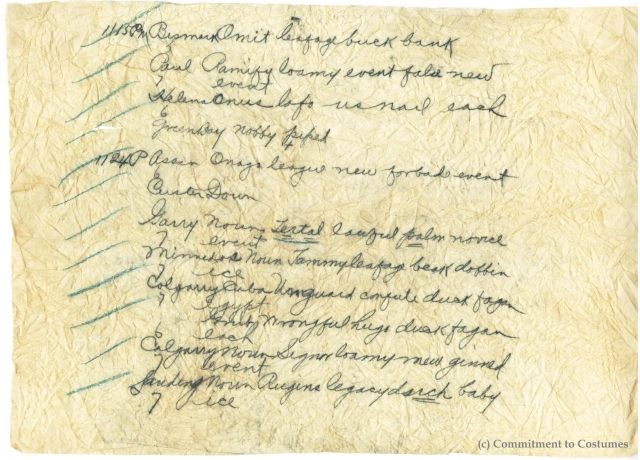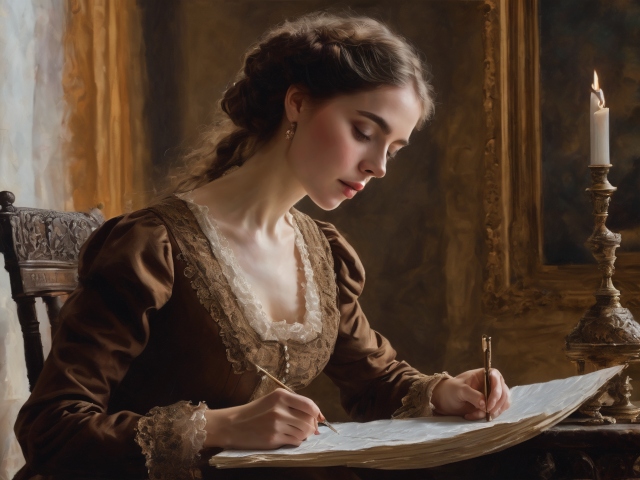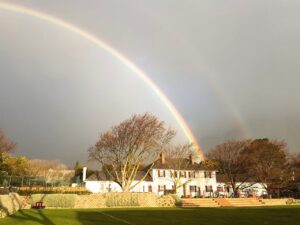[imagesource:gencraftai]
Sara Rivers Cofield fell in love with a Victorian dress in a Maine antique mall, but after haggling the price down, she discovered that the dress held a secret that took researchers years to crack.
Despite the dress being unlike anything she had ever owned – with a fitted bodice, puffy bustle and lace cuffs reflecting the bygone era of 1880 – the new owner found a hidden pocket on the inside of the dress. The pockets contained two crumpled sheets of paper with lists of seemingly random words and places:
Bismark, omit, leafage, buck, bank
Calgary, Cuba, unguard, confute, duck, Fagan
Notes on the margin of the papers appeared to depict time, with the only clue to the owner’s identity being a tag stitched into the dress with a handwritten name: Bennett.

Needless to say, Cofield was baffled, and as one does when confronted with a mystery, she posted pictures of the cryptic pages on the internet.
“I’m putting it up here in case there’s some decoding prodigy out there looking for a project.”
Fortunately, the internet is brimming with amateur sleuths, and soon the “silk dress cryptogram” drew the attention of people all over the world. Conspiracy theorists claimed that Bennet could have been a spy, while some claimed the notes had something to do with the American Civil War.
Cofield told CNN that she was perplexed. The language was cryptic. What did the cryptic language imply, and why did Bennett require a “super secret hidey-hole?”
The buttons alone depicted a sad Ophelia from Shakespeare’s “Hamlet,” and were worth more than the outfit itself.
Others suggested that it was a kind of communication similar to the telegraph, a new method of conveying short notes introduced in the United States in the 1800s that cost senders a fee based on the number of words in a message.
“Every once in a while I would see that a comment was posted or that some other codebreaker would email me and be like, ‘Hey, I’m still interested in this,’ but nobody ever solved it.”
The mystery could easily have remained just that until a Canadian researcher stumbled across the code online in the summer of 2018. Wayne Chan went on to study 170 different codebooks with no luck. “I worked on it for a few months but didn’t get anywhere with it. I set it aside and didn’t look at it again,” he told CNN.
It was only when Chan began looking at weather codes used in North America during the telegram era that the cryptic message began to make sense.
He decoded the messages and discovered a weather report. They were not encrypted for secrecy, but rather to allow forecasters to condense lengthy weather reports into a few words, according to Chan. Each word indicated a certain place and time of day’s weather factors such as temperature, wind speed, and barometric pressure.
For example, the line “Bismark Omit leafage buck bank” contains specific details. “Bismark” meant it was recorded at Bismarck station in what is now North Dakota. “Omit” meant the air temperature was 56 degrees and the barometric pressure was 0.08 inches of mercury. “Leafage” referred to a dew point of 32 degrees Fahrenheit observed at 10 p.m. “Buck” indicated there was no precipitation, while “bank” meant a wind velocity of 12 mph and a clear sunset.
The National Oceanic and Atmospheric Administration offered ancient weather maps as part of Chan’s research, which allowed him to determine the exact date of the weather measurements in the coded note: May 27, 1888.
Chan went on to publish an academic paper based on the note and when he contacted Cofield, she was amazed that anyone was still working on the cryptogram.
“I’m an archaeologist for a living, so I do a lot of research into the past,” she says. “I’ve long since come to terms with the fact that not every artefact or every document is going to reveal all of its secrets.”
Cofield’s dress still has a few mysteries, but for now, the biggest one has been solved.
In the end, the “silk dress cryptogram” turned out to be the 1800s version of today’s Accuweather app.
[source:cnn]





